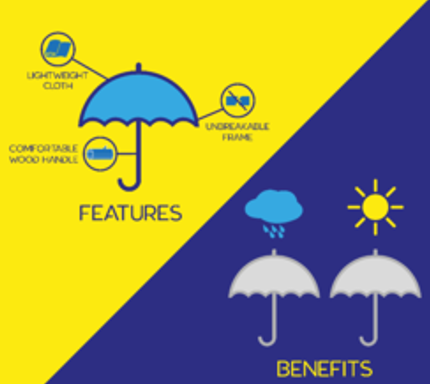What makes people buy?
This can be different for every individual; we all have different things that motivate us when making a purchase. In a pharmacy environment this might relate to the purchase of medication, or the purchase of general toiletries and the motivations may be very different. What will remain constant is that customers want to purchase products that meet their needs.
Things that will motivate a person to buy can include price, quality, brand, what a product can do for them, or how a purchase will make them feel. If you are providing good customer service you will recognise this and by listening and asking the right questions you will understand the customer’s needs and help them make the right purchase. This will encourage them to return and build repeat business for your pharmacy.
Features and benefits
A feature of a product is a fact about it, something that is not a matter of opinion. For example, it is soluble, it contains paracetamol, and it is sugar free.
A benefit is exactly what it states, what the feature will do for the customer, and you should link the two together when selling to the customer. For example, ‘These are individually sealed so they are convenient to carry with you.’
When you are asking a customer about their ailment or condition you will obtain some key facts from them. Your skill is in linking the customer’s needs to a relevant feature and associated benefit. For example, if the customer had told you that they had tried a particular medicine but found it hard to swallow you might say that, ‘This one is soluble so it should be easier for you to take’. It demonstrates that you were actively listening and have chosen a product suitable for their specific needs.
Customers will buy a product for what it will do for them, how it will benefit them.
Here are a few examples of how this might work in practice. The features are indicated in green and the benefits in blue. Go through the examples and then think of a different product and start the process again. As soon as you understand the difference between features and benefits you will really be able to make a difference in meeting your customer’s needs.
‘It is a non-drowsy formula so you can still drive'
‘These are coated so they are easier to swallow'
‘These are Numark brand so they are good quality at a great price’
‘A drowsy antihistamine will relieve the itch and help you sleep if you are being kept awake by your symptoms’
‘This is dual action so it will treat both your sore throat and blocked nose'
Try not to confuse your customer when discussing benefits, for instance do not say that a cold remedy contains an antipyretic; try saying that it includes an ingredient that will reduce fever. Keep things simple and describe things in a way that is easy to understand.
Product knowledge is also an essential part of being able to assist your customer in the buying process. You will not be able to translate features into benefits if you do not have sufficient knowledge of your products in the first place. However, you will never know or remember everything, and it is alright to check, what is important is the way in which you do it. If you mutter something about ‘not being sure’ it will not instil confidence in the customer, but if you say something like, ‘I just want to be really sure for you, I’ll just check with my colleague/the pharmacist’ it actually indicates to the customer that you are being diligent and has the opposite effect - it gives the customer confidence in you!

